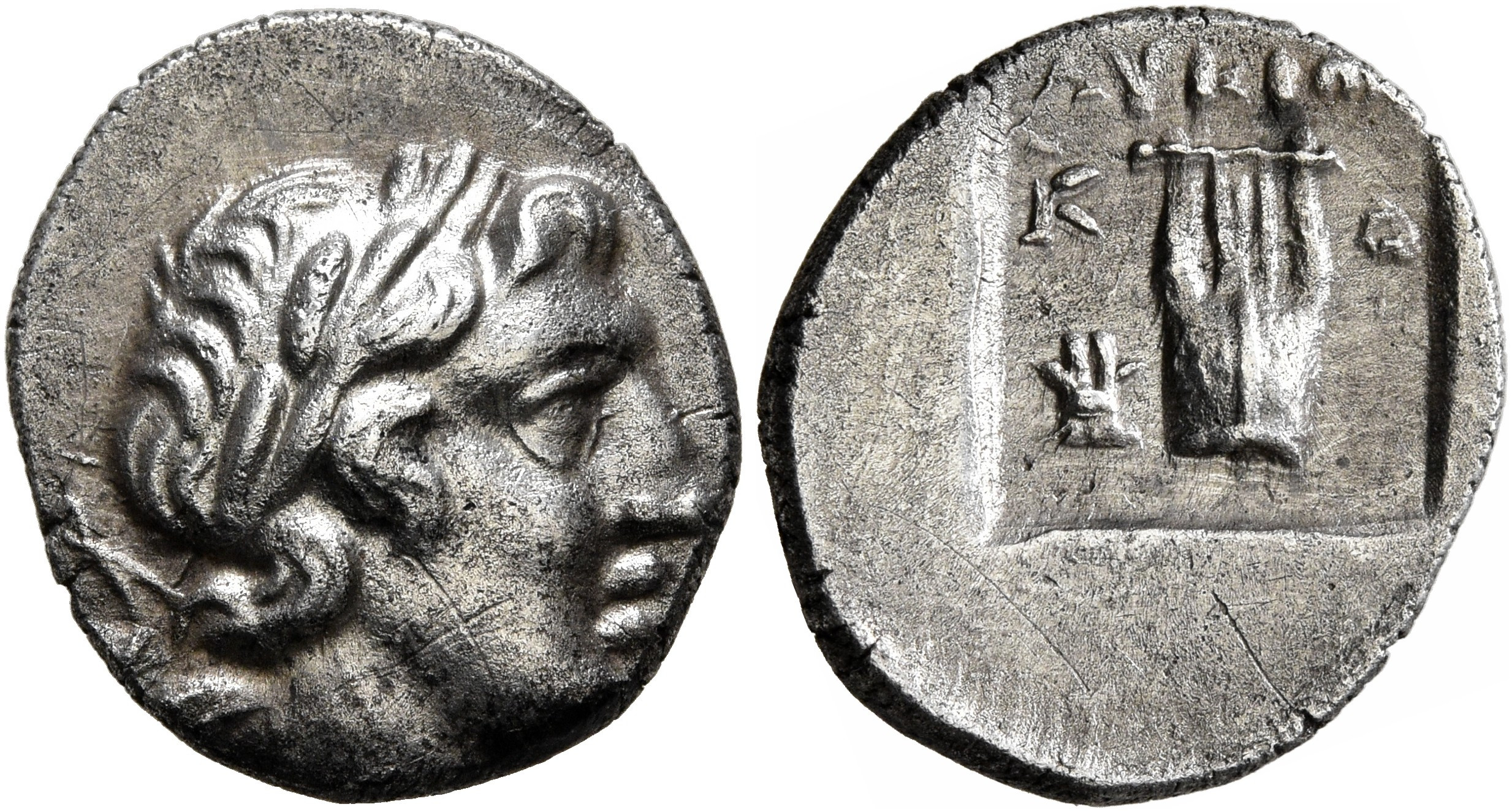H 255 - Uncertain mint, silver, drachma, 167-77 BC
From SILVER
167 BCE - 77 BCE Silver 25,706 kg
Description
| ObverseInscription or printing placed on the obverse.: | Laureate head of Apollo right, with bow and quiver over his shoulder. |
| ReverseInscription or printing placed on the reverse.: | ΛΥΚΙΩΝ (Greek).ΛYKIΩN / K-O Kithara, to lower left, Isis crown, all within rectangular incuse. |
Mint and issuing power
| MintIdentifies the place of manufacture or issue of a numismatic object.: | Lycia (uncertain mint) | Ancient regionAncient region.: | Lycia | Modern countryModern country: Turkey | AuthorityIdentifies the issuing power. The authority can be "pretended" when the name or the portrait of X is on the coin but he/she was not the issuing power. It can also be "uncertain" when there is no mention of X on the coin but he/she was the issuing power according to the historical sources: | Lycian League |
Chronology
| FromIdentifies the initial date in a range assigned in a numismatic context. | 167 BCE | toIdentifies the final date in a range assigned in a numismatic context.. | 77 BCE | PeriodTime period of the numismatic object.: Hellenistic 323-30 BC |
Physical description
| MetalThe physical material (usually metal) from which an object is made.: | Silver |
Median weightMedian of the weights of numismatic objects (in grams). in grams | 2.80 | DenominationTerm indicating the value of a numismatic object. Examples: tetradrachm, chalkous, denarius.: | drachma |
StandardStandard.: |
Image

H255 Lycia drachm.jpeg [1]
References
| Die study referencePublication of the study: | Troxell 19821Troxell 1982 | ||
| Coin series referenceReference to coin series study: | Sear II2Sear II, n° 5267-5271, 5283, 5285, 5287, 5291-5298, 5311-5312, 5319, 5340, 5344, 5346, 5351, 5365, 5374-5375, RQEMH3RQEMH, n° 255 | ||
Obverse dies distribution
Reverse dies distribution
no distribution is available
Quantification
| Number of obversesNumber of obverse dies. ᵖ (o) | 201 | Number of singletons (o1)The number of singleton coins. ᵖ | 140 |
| Number of reverse diesNumber of reverse dies. (r) | 266 | Number of coinsNumber of coins. (n) | 310 |
| Coins per obverse dieNumber of coins per obverse die. (n/o) | 1.54 | Coins per reverse dieNumber of coins per reverse die. (n/r) | 1.17 |
| Reverse per obverse ratioRatio of obverse dies divided by reverse dies. (r/o) | 1.32 | Percentage of singletons (o1)number of coins (n) divided by the number of singletons (o1) ᵖ | 69.65 % |
| Original number of dies (O) (Carter 1983 formula)The estimation of the number of coins according to Carter 1983 ᵖ | 459.03 | Coins struck if 20,000 as average productivity per dieCoins made if the average productivity for obverses (according to Carter) is 20,000. ᵖ | 9,180,600 |
| Original number of dies (O) (Esty 2011 formula)The estimation of the number of coins according to the singleton formula in Esty 2011 ᵖ (O) | 571.65 | Survival rate if 20,000 as average productivity per dieSurvival rate if average productivity is 20,000. ᵖ | 0.00003 |
| Coverage (o = % of O) (Esty 1984 formula)Esty 1984 - coverage (% of O) ᵖ (o = % of O) | 54.84% | Die productivity if survival rate 1/2,000Average productivity if survival rate is 1/2,000. ᵖ | 1,350.67 |
| Weight of silver (in kg) if 20,000 coins per die (O = Carter formula)Carter 1983 * Median weight * 20000 (*10 if gold or electrum) ᵖ | 25,706 kg <br /> 25,706 kg | Die productivity if survival rate 1/5,000Average productivity if survival rate is 1/5,000. ᵖ | 3,376.69 |
Remarks